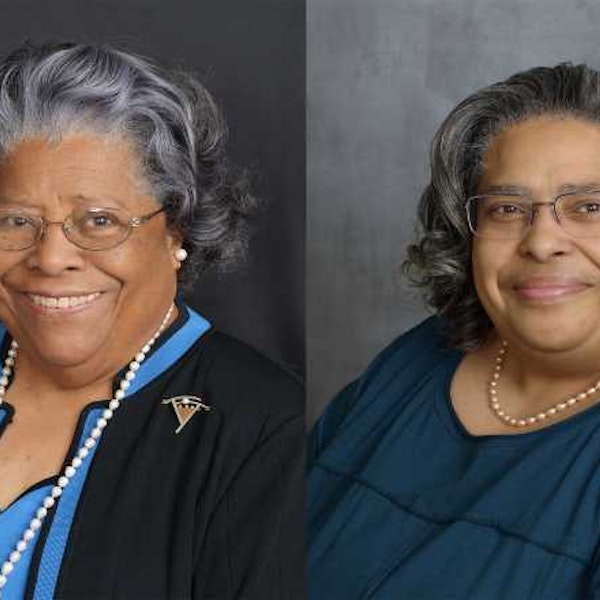A Return To Rocky Fork: Early People

Though she never lived in Rocky Fork, Priscilla Baltimore was instrumental in founding the community. Born in Kentucky, she was sold by her father to another Methodist minister from St. Louis, Missouri. He allowed her to work as a seamstress to purchase her freedom. Well respected in St. Louis, Priscilla was therefore allowed to take enslaved peoples to church meetings. In 1825, she took eleven families to a meeting near today’s Brooklyn, Illinois, and founded Freedom Town. Four years later, John Paul Quinn, an AME circuit-riding missionary, visited Freedom Town, organizing the people as a religious group and an Underground Railroad station. Priscilla Baltimore brought Rev. Quinn to Alton, where he organized the Lower Alton AME Church, part of today’s Trinity AME Church. Then, they traveled on to Rocky Fork where he organized the people into a religious group that became the Rocky Fork Bethel AME Church. The combined efforts of Mother Baltimore and Rev. Paul Quinn established an AME Underground Railroad route from St. Louis, Missouri, through Jersey County, Illinois. After leading more than 300 people to freedom, many through Rocky Fork, Priscilla Baltimore is known as” The Moses of the West.”
From Prairie du Rocher, Randolph County, Illinois Peter and Lavine Baker moved their family to Alton in 1835 after having completed a term of indenture. Founding members of the Colored AME Church in the city, the Bakers were well known to Priscilla Baltimore and Rev. Paul Quinn. After learning of the Rocky Fork settlement, Peter Baker purchased 40 acres of land at $10 an acre and moved his family to the community. He later purchased more land from A. T. Hawley and established a cemetery that cradles the remains of twenty-five early settlers. Called to continue the AME freedom work, Peter and Lavine moved north, joining the AME church group that met at Diamond School in Delphi, Illinois. Peter befriended known abolitionist, Dr. Diamond. On September 21, 1879, before a crowd of 3,000 in Brighton, Illinois, the two men shared the podium in celebration of the Illinois Black Laws’ repeal. At the time of her death in 1905, Lavine Baker was returned to lie in eternal rest at Rocky Fork.
London and Agga Jane Parks, with their four children, registered at the Madison County Courts as required of free persons of color in 1837. The family settled first in Alton and like the Bakers, became founding members of the Lower Alton Colored Methodist Church. The Parks moved to Rocky Fork in 1842 after purchasing 48 acres for $150. London Parks became an initial trustee of Rocky Fork Bethel AME, and when plans began for a church building, he deeded the land for construction for just $1. Eventually, the family moved north to Delphi and helped organize the gathering of worshippers at Diamond School. Mrs. Agga Jane Parks was returned to Rocky Fork for burial in 1880.

Erasmus Green’s father was a respected Methodist minister appointed to the Louisiana Conference. The elder Green purchased his own freedom and assisted others in doing so. When Rev Paul Quinn sent the call for a spiritual leader for a freedom-seeking community in Illinois, Erasmus answered the call. He and Eliza Jane, his wife, came to Rocky Fork in 1857.

They settled into their lives farming land purchased from Misters Baker and Hawley. They welcomed four children and served the people of the area through their good works and the founding of Bethel AME, Rocky Fork Church. Months after the founding in 1863, Erasmus answered a call to arms. Forbidden to own or carry weapons in Illinois, he joined Company B of the 56th US Colored Infantry in St Louis, Missouri. Following three years of distinguished service in Arkansas, Rev. Green rejoined his family and parishioners in Rocky Fork, bringing Andrew Jackson Hindman formerly of the 56th.

Together Rev Green and co-pastor Hindman raised the first Rocky Fork Bethel AME church building in 1869. Rev. and Mrs. Green served the community until they died in 1907 and 1927, respectively. Descendants of the Greens and A. J. Hindman still live in the area and support the church.
African American Newspapers in Alton
Mysterious Mineral Springs has a recipe for paranormal adventures
About the Author

Charlotte E. Johnson & Reneé B. Johnson